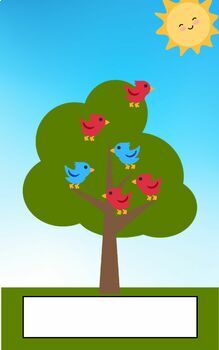Addition and Subtraction Story Matching
Stories With Cori
7 Followers
Grade Levels
1st - 4th
Subjects
Resource Type
Standards
CCSS1.NBT.C.4
CCSSMP4
Formats Included
- PDF
Stories With Cori
7 Followers
Description
This book helps students build math story problem comprehension by having them match each step of the problem to the picture.
This is a set of 4 addition and subtraction math word problems. Instead of students solving a problem in the traditional sense, they are learning what it means to visualize a problem.
It can be used with a whole group, in small groups, or as individual work. Best when printed in color.
Visit my TPT store, StoriesWithCori, for more math stories that help build conceptual understanding.
Total Pages
Answer Key
Included
Teaching Duration
N/A
Report this resource to TPT
Reported resources will be reviewed by our team. Report this resource to let us know if this resource violates TPT’s content guidelines.
Standards
to see state-specific standards (only available in the US).
CCSS1.NBT.C.4
Add within 100, including adding a two-digit number and a one-digit number, and adding a two-digit number and a multiple of 10, using concrete models or drawings and strategies based on place value, properties of operations, and/or the relationship between addition and subtraction; relate the strategy to a written method and explain the reasoning used. Understand that in adding two-digit numbers, one adds tens and tens, ones and ones; and sometimes it is necessary to compose a ten.
CCSSMP4
Model with mathematics. Mathematically proficient students can apply the mathematics they know to solve problems arising in everyday life, society, and the workplace. In early grades, this might be as simple as writing an addition equation to describe a situation. In middle grades, a student might apply proportional reasoning to plan a school event or analyze a problem in the community. By high school, a student might use geometry to solve a design problem or use a function to describe how one quantity of interest depends on another. Mathematically proficient students who can apply what they know are comfortable making assumptions and approximations to simplify a complicated situation, realizing that these may need revision later. They are able to identify important quantities in a practical situation and map their relationships using such tools as diagrams, two-way tables, graphs, flowcharts and formulas. They can analyze those relationships mathematically to draw conclusions. They routinely interpret their mathematical results in the context of the situation and reflect on whether the results make sense, possibly improving the model if it has not served its purpose.





